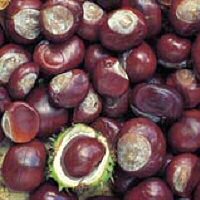Countryside Rangers Diary
October
This month is Conker month!!!
 Conker Facts
Conker Facts
- The prickly case of a conker is poisonous
- The conker is the fruit of the Horse chestnut tree. They originally come from Albania and Greece. They were introduced into the UK in the late 16th century
- Around the country conkers are known as cheggies, hongkongs, conquerors, obbleyonkers and cobs.
- Methods for hardening conkers include pickling in vinegar, baking in a slow oven, over wintering in a warm cupboard, paining with varnish or glue, injecting with resin, and even being passed through a pig!!!
- The most successful untreated conker to be recorded was a ‘five thousander’ in 1954. However, it’s now believed this conker was a ‘ringer’, an ivory or tagua nut.
- The first recorded game of conkers was in 1848. Before then, children played a game with hazelnuts and snail shells.
- During the First and Second World Wars, children were recruited to collect conkers, which were used in the manufacture of explosives.
- To avoid damage to horse chestnut trees, the Guinness Book of records does not publish any category for the largest collection of conkers.
When collecting conkers remember only to take a couple. Autumn fruit like conkers and sweet chestnut provide vital food for the deer during this month.
Autumn Leaves
 Falling leaves are one of the best sights of autumn. With the many colours they are blown into every nook and cranny.
Falling leaves are one of the best sights of autumn. With the many colours they are blown into every nook and cranny.
Trees that loose their leaves in winter are called deciduous. They are mostly broadleaved trees, which flower and fruit in the summer and autumn months. Conifers are tree which have tough needles and cones rather then leaves and fruit. They are mainly evergreen. The larch is one exception and there are many in the Park.
All plants need water to survive, and in the winter the roots of a tree may have a difficult job taking up water from the frozen ground. As winter approaches the sap in the leaf drains back into the stem, a cork-like substance grows across the twig and cuts off the leaf. The wind blows the dead leaf away and only its scar is left to show where it had been.
But the job of the discarded leaf isn’t over yet. Spread thickly across the floor of the woodland, the dead leaves rot down gradually over the years into the earth, making up a rich leaf mould. This enriches the soil for future years.